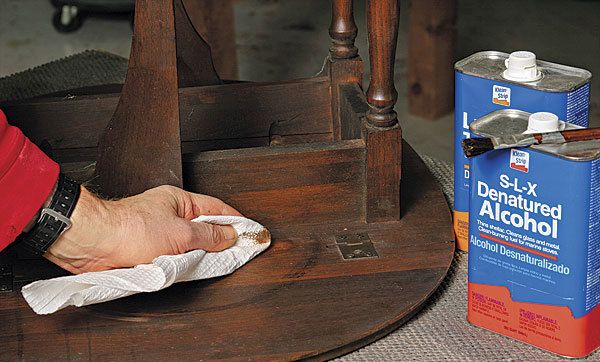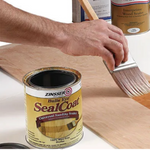
Q:
How can I identify the finish on a piece of furniture so that I can repair it?
Jack Simpson, Abilene, TX
A:
To know which finish you’re dealing with, try to dissolve it. Test a hidden spot. You’ll know the finish by which solvent removes it.
First, remove any wax on the surface by rubbing it with a cotton cloth dampened with mineral spirits.
Next, in an inconspicuous spot, place a drop of denatured alcohol on the surface, wait a few minutes, and then rub the area with a paper tissue. If the finish is shellac, you’ll rub some off. If the surface stays hard, repeat the test with a drop of lacquer thinner. If the surface becomes sticky, the finish is lacquer or a water-based finish. The latter was rarely used before the 1990s, so lacquer is the only candidate on older pieces.
If the surface remains undamaged by the lacquer thinner, you have a reactive finish such as varnish.
In the case of a shellac or solvent-based lacquer finish, a fresh coat of the same finish will melt into the existing finish, making repairs relatively simple if the existing finish is in good shape.
A fresh coat of a reactive finish, however, won’t chemically bond to an old coat, so you’ll either need to sand the existing surface to create a mechanical bond or, if the existing finish is too badly damaged, strip it entirely and start again from bare wood.
Fine Woodworking Recommended Products


Osmo Polyx-Oil

Bumblechutes Bee’Nooba Wax








Log in or create an account to post a comment.
Sign up Log in